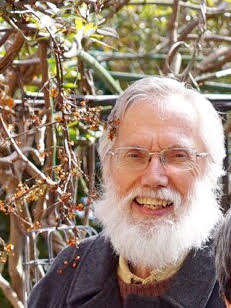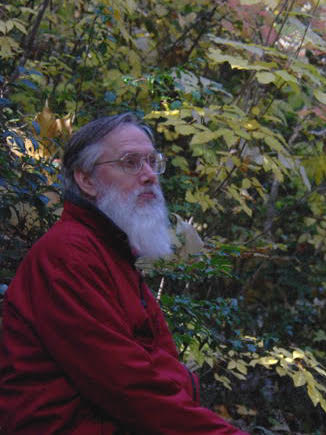
Please tell us a little about your upbringing and your relationship with Japan.
I was born in Colorado and grew up in a family that loved nature, storytelling, and the fine arts. Between 1948 and 1960, my parents were educational missionaries. We were first in China and then in Japan. We arrived in Japan early in 1950 (when I was five). It was the time of the Allied Occupation, which officially lasted until 1952, although the Allied military presence remained strong for a while after that because of the Korean War. The environment was diverse, culturally rich, and international. In 1960 we returned to the United States because of my mother’s illness.
Please tell us something about your writing career.
In my twenties I read and wrote voraciously and occasionally published poetry or short fiction in small literary magazines. Started translating as an undergraduate (one result was Meadow of Stars, by Eiji Shono, tr. Roy Teele, Nick Teele, and Yoko Sugiyama. Rironsha, 1970). Started writing tanka (short poems) in English in the early 1970s and it has been my main poetic form ever since. In the 1990s, I published in online journals and communities and in the journals of the Tanka Society of America and The Japan Tanka Poets’ Society (Nihon Kajin Club), but virtually stopped when administrative duties became too heavy. Academic writing has been mostly in the areas of classical Japanese and comparative literature, and ESL. Translation work, too, pretty much stopped after 1993, and has only recently restarted.
Which book has been your proudest achievement, and why?
Ono no Komachi, Poems, Stories, Noh Plays (tr. Roy, Rebecca, and Nicholas Teele. Garland, 1993). My father died in 1985 without having completed a book of translations of Noh plays he had been working on. My sister and I selected the ones featuring the 9th century poet Ono no Komachi, expanded the concept to include her poetry, and two medieval stories and a modern Noh play about her, and completed the work he had started. It was an honor to be able to accomplish that.
What are you currently working on?
I have three projects that I want to finish in the next few years. The first is the translation of a book by Hayashi Nozomu on the Shin-hanga artist Kawase Hasui. It will be published by Kawade in 2020. The next project to be finished is a book on the Hyakunin Isshu, an anthology of poetry compiled in the 13th century. Rather than translate the poems, I define and explain the words, phrases, structure, and background of each poem, and also provide information about the poets and the times they lived, so that people who do not know Japanese can understand the meaning and some of the contexts involved, and make their own translations. This should be finished next year.
The third project is to complete a book on the Saikoku Sanjusansho Kannon Pilgrimage. The first draft of this book, completed about twenty years ago, is an account of my experiences when I first visited the thirty-three temples on the route in numerical order. Although focusing on Kannon Bosatsu, these experiences inevitably involved the sacredness of place. On subsequent pilgrimage to the temples, I have tried to better understand the elements that are involved in expressing this sacredness of place, and have expanded my research to include guidebooks to the pilgrimage and commentaries on the temple poems (goeika) written before the separation of Buddhism and Shinto in the early Meiji period. My goal is to better identify and understand the elements that work together in expressing the sacredness of place which exists at each of the temples, and in the pilgrimage as a whole.

What would you say are the benefits and disadvantages of living in Kyoto?
Perhaps the main benefit of living in Kyoto is that it is a powerful hub of traditional Japanese history, culture, and spirituality, and an unparalleled treasure trove. In addition, with hills on three sides, the exquisite quiet side of nature is never far away. In spite of “progress” Kyoto is a beautiful city, with a stimulating mixture of old and new. (I actually live midway between Kyoto and Nara.)
How did you get to be president of Doshisha Women’s College, and what challenges did you face?
I was elected. (In elections for president at the college, faculty and staff vote to select someone from among faculty with the rank of professor. There are no pre-announced candidates. If no one receives a majority of the votes, faculty members vote to select the president from the two people who received the most votes.) It was not a position I aspired to. I served one three-year term (at the end of which I was 65 and not eligible for reelection). The college staff was outstanding and was very supportive, as were the faculty. Fortunately there were no major problems. The greatest challenge was trying to balance opposing views, remain neutral, and be fair.
For Nicholas Teele’s academic papers on Researchgate see here and on academic.org see here.
For a listing of the books with which Nicholas has been involved as editor or translator, see this page on Goodreads.
